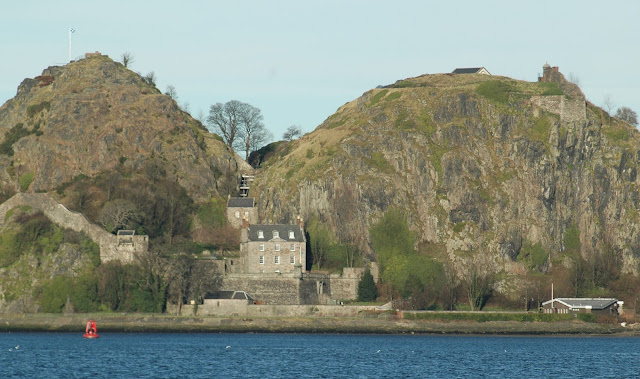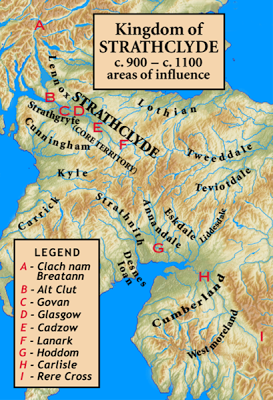 |
| View North across the River Clyde toward Dumbarton Castle |
In Saga, Artgal can do the following things for your faction.....
Replacing your standard Warlord for one point, as a vindictive King, he generates three Saga dice to persecute his enemies with.
He is determined and resilient which passes off to those in his faction. To represent this, his troops in melee cannot have their fatigue removed to increase the enemy armour until their own armour has been reduced first. If the unit only has one fatigue, it isn't going to help the enemy armour!
The movement of Artgal and any of his mounted Hearthguard is increased by a distance of "S" (4 inches) regardless of terrain or of any fatigue used against it.
Artgal can, once per turn, take off two Fatigues and call in an off-table unit. That unit is subject to the conditions of the "Flanking Manoeuvre" ability but does not use any dice on the Battleboard. Basically, Artgal could if needed bring two units from off-table by also using the standard "Flanking Manoeuvre". Very nice indeed.
There you have it in a nutshell, one very useful individual.
 So, who was this person who can generate so much goodness in your Saga faction? Firstly, Alt Clut was literally the "Clyde Rock", a piece of basalt volcanic rock standing some 73 metres high next to a major river. Naturally, it became fortified and occupied by the strategically important Dumbarton Castle. The area around Alt Clut being known as the Kingdom of Strathclyde from about the fifth century onward. Artgal was believed to be the first actual King of Alt Clut and the Strathclyde region, somewhere in the mid to late 800's. His son Rhun married a daughter of the King of Alba, Kenneth MacAlpin.
So, who was this person who can generate so much goodness in your Saga faction? Firstly, Alt Clut was literally the "Clyde Rock", a piece of basalt volcanic rock standing some 73 metres high next to a major river. Naturally, it became fortified and occupied by the strategically important Dumbarton Castle. The area around Alt Clut being known as the Kingdom of Strathclyde from about the fifth century onward. Artgal was believed to be the first actual King of Alt Clut and the Strathclyde region, somewhere in the mid to late 800's. His son Rhun married a daughter of the King of Alba, Kenneth MacAlpin.Artgal led a struggle against the Scots and as part of this attacked their fortress at Dunblane. Later on though, the Kingdoms of Alba and Strathclyde joined forces against a common enemy, the Norse from Hibernia (Ireland). In return, the Dublin based Norse spent four months sieging Alt Clut itself at which point it was sacked and Artgal was taken prisoner. He was taken to Ireland and imprisoned. At some point in 872 AD he was presumed put to death, possibly with the consent of Constantine I, thus ending his reign. His son Rhun became the next King of Alt Clut.
Artgal may not have had the longest life or happiest end, but it seems clear he lived very much as a Warlord in nature and as such, in my opinion, made a very good candidate for a Saga Hero of the Viking Age.




